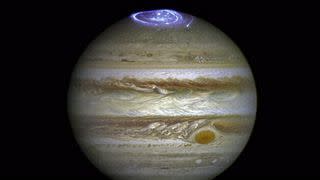Want to spot 'Steve' the aurora? Here's how to do it

There's a never-before-studied aurora gracing night skies around the world, and NASA wants you to try to spot it.
The newfound aurora, named Steve (short for Strong Thermal Emission Velocity Enhancement), looks like a purple light with some green features.
Scientists think that Steve likely appears when charged plasma from the sun hits the Earth's magnetic field in a certain way, according to a new study published in the journal Science Advances.
SEE ALSO: 'Steve' is the name of a new kind of aurora, discovered thanks to citizen scientists
Citizen scientists helped discover Steve, but more observations in the future could help researchers figure out exactly how and when it forms.
So, what's the deal with Steve, and how can you spot it in the night sky?
The particularly unique thing about Steve is that it looks somewhat like a line instead of the more typical oval you get with traditional auroras. It can also be seen from space, according to NASA.
"This is a light display that we can observe over thousands of kilometers from the ground,” NASA scientist Liz MacDonald said in a statement.
“It corresponds to something happening way out in space. Gathering more data points on STEVE will help us understand more about its behavior and its influence on space weather.”
The more observations of Steve the better, as far as NASA is concerned. By spotting the mysterious type of aurora, scientists should hopefully be able to piece together exactly how it works and why it appears every now and then.
If you want to try to spot the special aurora in person, NASA has a some tips for you:
Be sure to document all your Steve sightings with Aurorasaurus, the organization that first started gathering observations of it.
Auroras are created when charged particles shot out by the sun slam into Earth's magnetic field, warping it.
Some of those charged particles make it through the magnetic field, slamming into the upper atmosphere and interacting with neutral particles, creating the glow that we see as the northern or southern lights.
For the most part, the auroras can only be seen in the high latitudes, not far from the poles due to magnetic field lines, but when a solar storm is particularly intense, the oval of the aurora can reach down farther, bringing the special lights to people who usually can't see them.
WATCH: These new images show just how dazzling Jupiter's auroras are
